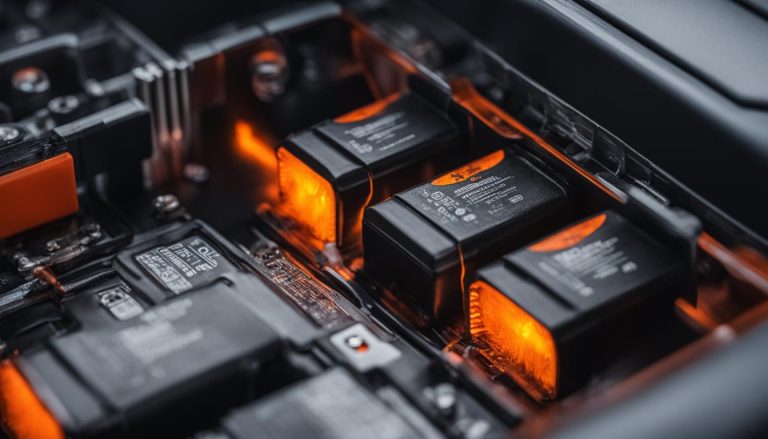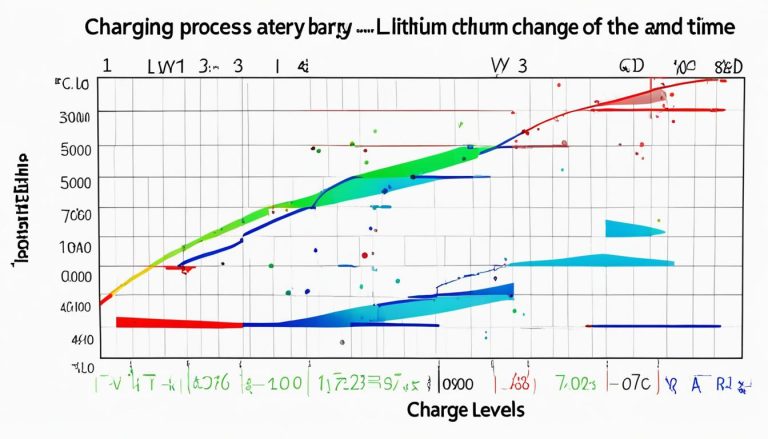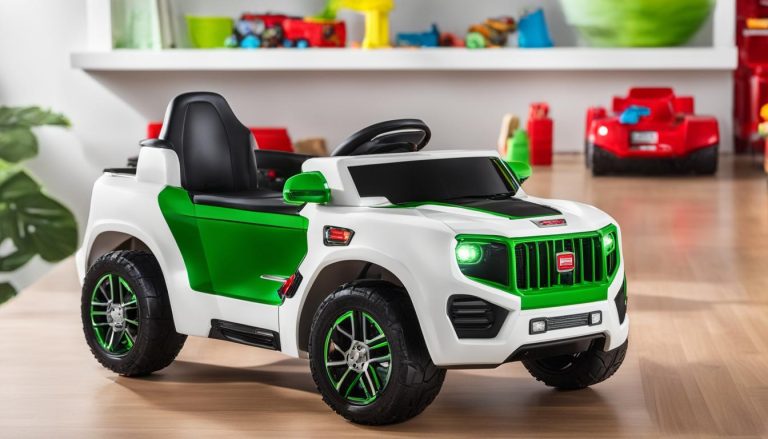Trickle Charge Your Lawn Mower Battery Safely
batterychargers.site and its partners may earn a commission if you purchase a product through one of our links
Is your lawn mower battery losing its charge before you even get a chance to mow? Don’t fret! Trickle charging is the solution you need to maintain the longevity of your lawn mower battery and ensure it’s ready to power through your next lawn care session. In this guide, we’ll explain what trickle charging is, why it’s important for your lawn mower battery, and how to safely implement it to maximize the battery’s lifespan.
Key Takeaways:
- Trickle charging delivers a slow and steady charge to your lawn mower battery over an extended period, preventing sulfation and ensuring readiness when you need it.
- It is recommended to trickle charge your lawn mower battery for several hours or overnight, depending on the size and condition of the battery.
- Always use a charger with overcharge protection and follow best practices for charging to avoid damaging the battery.
- Consider using “smart” chargers or lithium batteries as alternative options for maintaining your lawn mower battery.
- Implementing trickle charging and following best practices will help prolong the life of your lawn mower battery, ensuring optimal performance season after season.
How Long to Trickle Charge a Lawn Mower Battery
The duration for trickle charging a lawn mower battery can vary depending on the battery’s size, condition, and the charger being used. In general, it is recommended to trickle charge a lawn mower battery for several hours or overnight to ensure a full charge without risking overcharging.
Overcharging can damage the battery and cause dangerous fumes to leak, so it is crucial to unplug the charger once the battery is fully charged. Trickle chargers are not suitable for completely dead batteries and may not be able to revive them. To prolong the life of your lawn mower battery, it is best to follow best practices for charging, such as using a charger with overcharge protection, monitoring the charging process, and avoiding deep discharge of the battery.
Here are some best practices for charging your lawn mower battery:
- Use a charger specifically designed for your battery type.
- Check the manual of your specific battery charger for recommended charging times.
- Ensure the charger has overcharge protection to prevent battery damage.
- Monitor the charging process and unplug the charger once the battery is fully charged.
- Avoid deep discharge of the battery by recharging it before it completely dies.
Trickle charging your lawn mower battery is an effective way to maintain its charge and prolong its overall lifespan. By following these best practices, you can ensure that your battery is always ready to go when you need it, without the risk of overcharging or battery damage.
The Importance of Trickle Charging
Trickle charging is a slow and steady charging method that helps prevent sulfation and keeps the battery warm in cold weather, both of which can extend the life of your lawn mower battery. By providing a constant low-level charge, trickle chargers help combat the self-discharge that occurs naturally over time, ensuring that your battery retains its charge even during long periods of inactivity. This is particularly important when preparing to store your lawn mower or other equipment for an extended period.
| Battery Size | Recommended Trickle Charging Time |
|---|---|
| Small | 4-6 hours |
| Medium | 6-8 hours |
| Large | 8-12 hours |
Remember, these are general guidelines and may vary depending on factors such as battery condition and charger specifications. Always refer to the manual provided with your specific battery charger for accurate charging times.
Alternatives to Trickle Chargers
While trickle chargers are commonly used for maintaining lawn mower batteries, there are alternative options available. One alternative is the use of “smart” chargers that have safety features such as overcharge protection and voltage regulation. These chargers automatically stop charging once the battery is fully charged and switch to a trickle charge to maintain the battery’s charge without risking overcharging.
Another alternative is the use of lithium batteries, specifically LiFePO4 batteries, which have longer lifespans, hold more charge, and do not require trickle charging. LiFePO4 batteries also have built-in battery management systems that prevent overcharging and can handle different state-of-charge conditions better than lead acid batteries.
Consider switching to lithium batteries if you want a more efficient and effective solution for your lawn mower or other equipment. Remember to always follow best practices for charging, regardless of the charger or battery type used, to ensure the longevity of your battery.
FAQ
What is trickle charging and why is it useful for lawn mower batteries?
Trickle charging is a method of slowly charging a battery over an extended period of time. It is useful for lawn mower batteries because it helps prevent sulfation and keeps the battery warm in cold weather. Trickle chargers are designed to be left on the battery for long periods without overcharging and are especially beneficial for maintaining the charge of batteries that are not in use for extended periods.
How long should I trickle charge my lawn mower battery?
The duration for trickle charging a lawn mower battery can vary depending on factors such as the battery’s size, condition, and the charger being used. In general, it is recommended to trickle charge a lawn mower battery for several hours or overnight to ensure a full charge without risking overcharging. However, it is important to consult the manual of your specific battery charger for recommended charging times.
Are there any alternatives to trickle chargers for maintaining lawn mower batteries?
Yes, there are alternatives available. One option is to use “smart” chargers that have safety features such as overcharge protection and voltage regulation. These chargers automatically stop charging once the battery is fully charged and switch to a trickle charge to maintain the battery’s charge without risking overcharging. Another alternative is to use lithium batteries, specifically LiFePO4 batteries, which have longer lifespans and do not require trickle charging. LiFePO4 batteries also have built-in battery management systems that prevent overcharging and can handle different state-of-charge conditions better than lead acid batteries.
How can I prolong the life of my lawn mower battery?
To prolong the life of your lawn mower battery, it is best to follow some best practices for charging. These include using a charger with overcharge protection, monitoring the charging process, and avoiding deep discharge of the battery. Additionally, regularly cleaning the battery terminals and keeping the battery clean and dry can help maintain its performance and longevity.






